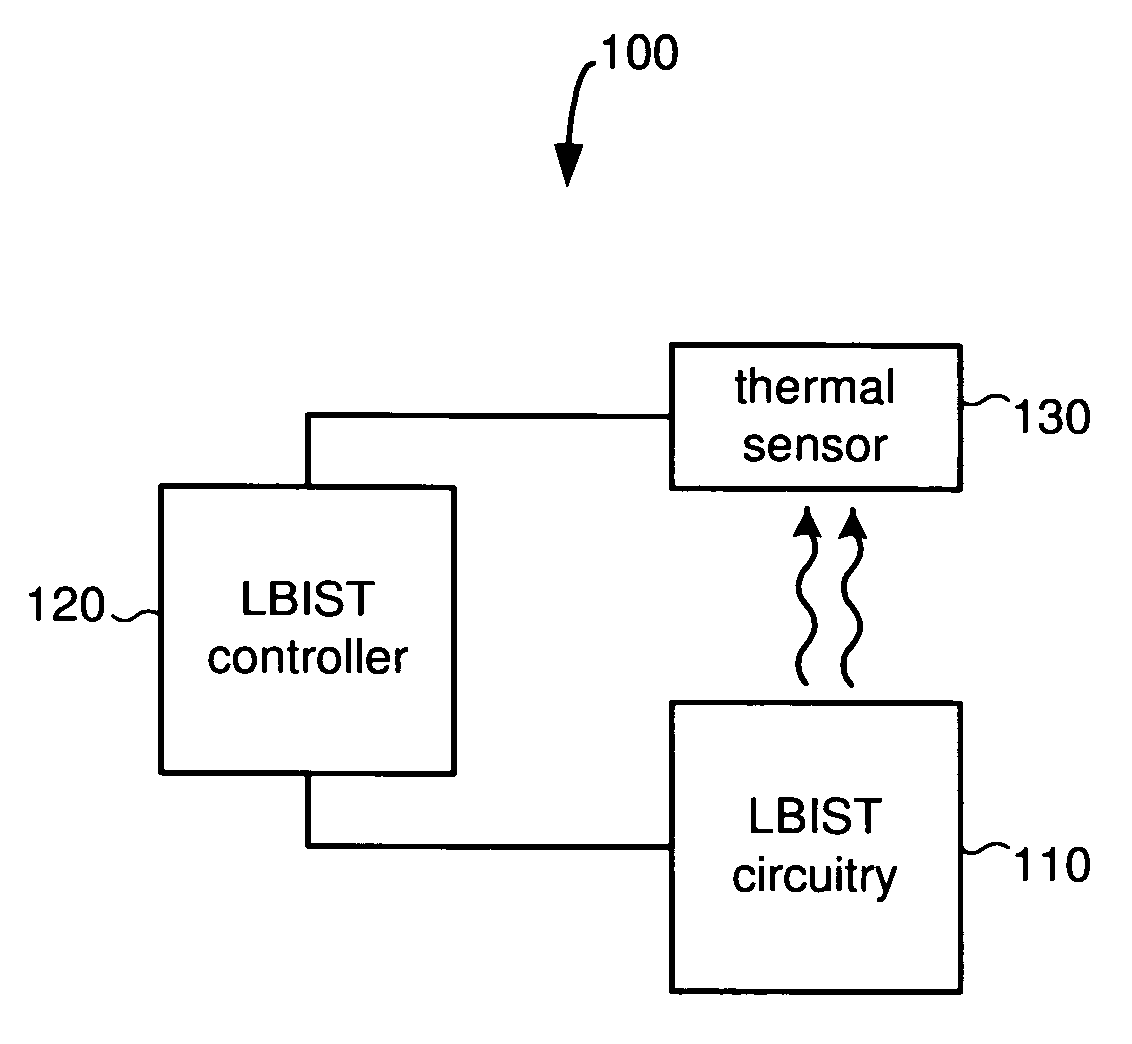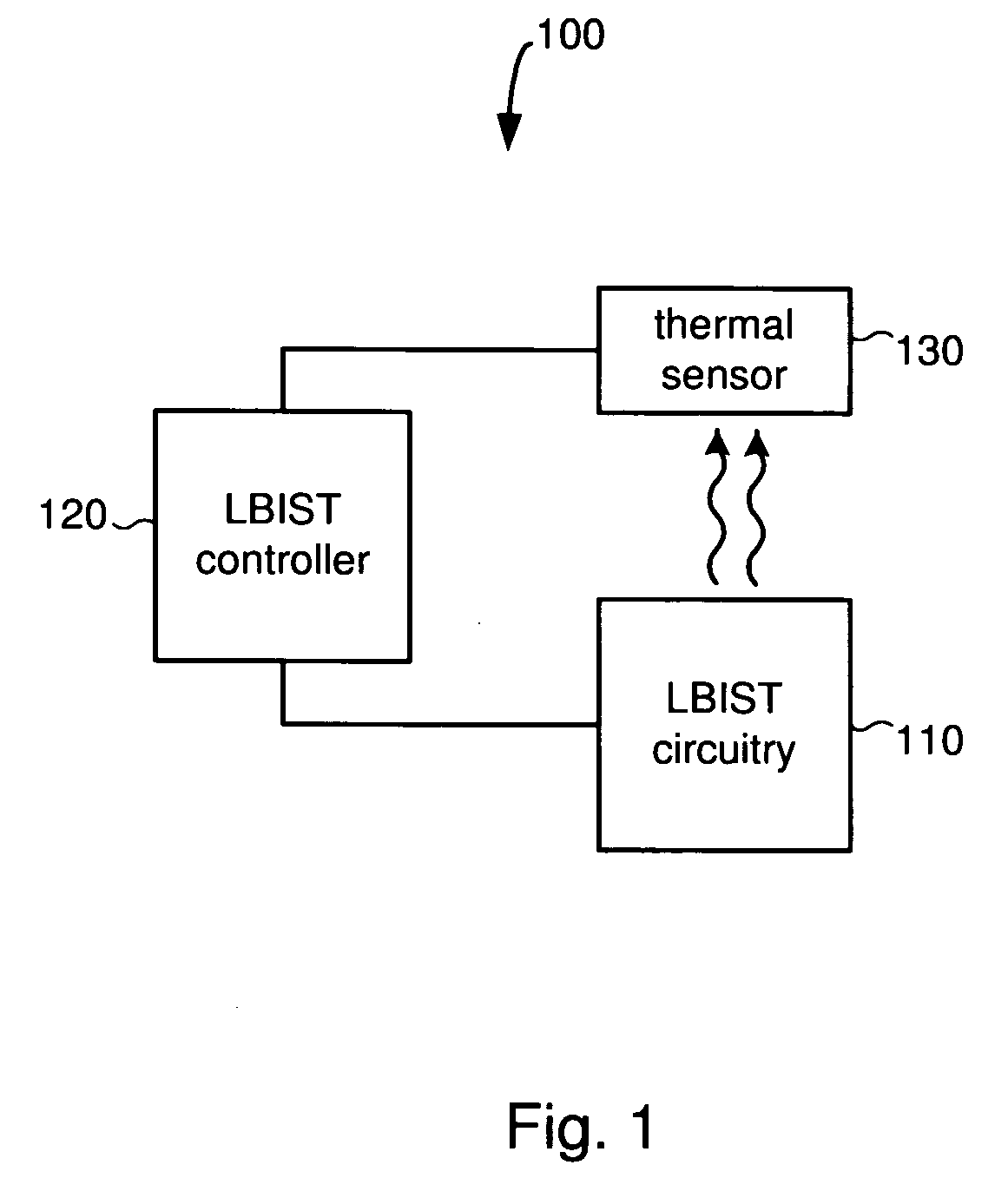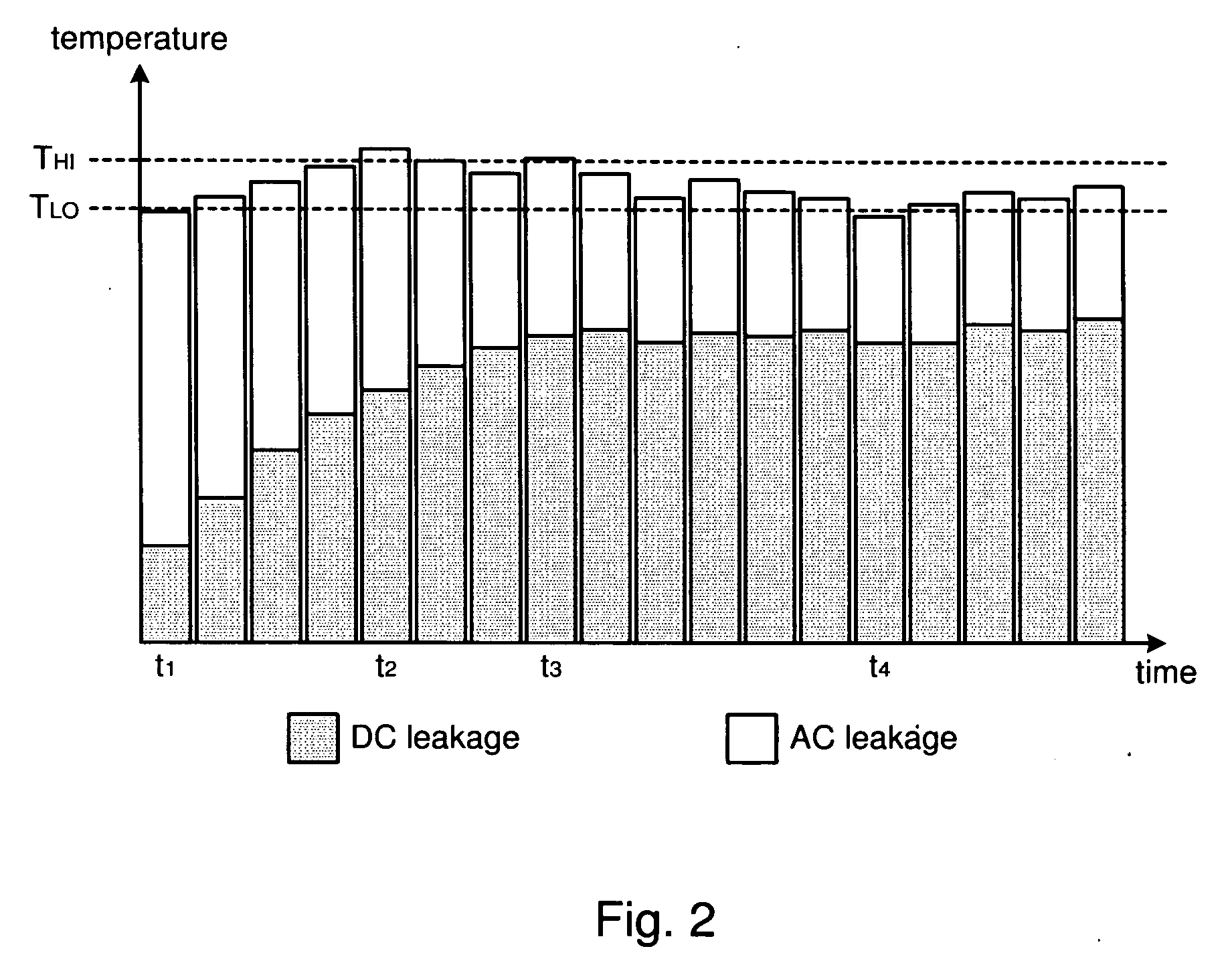System and method for burn-in test control
a technology of system and method, applied in the field of electronic circuit testing, can solve problems such as component failure, component failure, and component failure, and achieve the effects of reducing the number of components, and reducing the probability of failur
- Summary
- Abstract
- Description
- Claims
- Application Information
AI Technical Summary
Benefits of technology
Problems solved by technology
Method used
Image
Examples
Embodiment Construction
[0026] One or more embodiments of the invention are described below. It should be noted that these and any other embodiments described below are exemplary and are intended to be illustrative of the invention rather than limiting.
[0027] Broadly speaking, the invention includes systems and methods for controlling test conditions using logic built-in self-test (LBIST) components to affect test conditions. In one embodiment, an LBIST controller is coupled to LBIST circuitry that is incorporated into the design of a device under test, and also to a thermal sensor that is in thermal communication with the device under test. The LBIST controller is configured to receive device temperature information from the thermal sensor and to modify control signals that are provided to the LBIST circuitry in order to cause the LBIST circuitry to operate in a manner that drives the device temperature to a desired level.
[0028] In one embodiment, the LBIST circuitry that is incorporated into the device...
PUM
 Login to View More
Login to View More Abstract
Description
Claims
Application Information
 Login to View More
Login to View More - R&D
- Intellectual Property
- Life Sciences
- Materials
- Tech Scout
- Unparalleled Data Quality
- Higher Quality Content
- 60% Fewer Hallucinations
Browse by: Latest US Patents, China's latest patents, Technical Efficacy Thesaurus, Application Domain, Technology Topic, Popular Technical Reports.
© 2025 PatSnap. All rights reserved.Legal|Privacy policy|Modern Slavery Act Transparency Statement|Sitemap|About US| Contact US: help@patsnap.com



